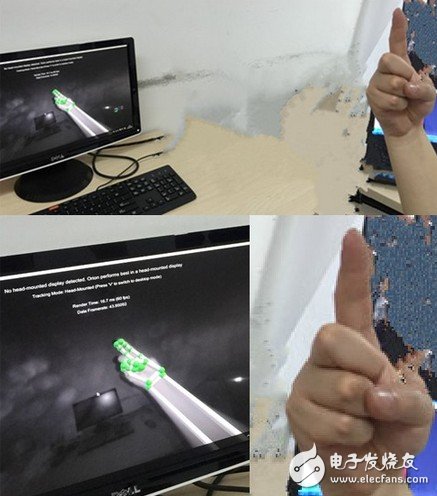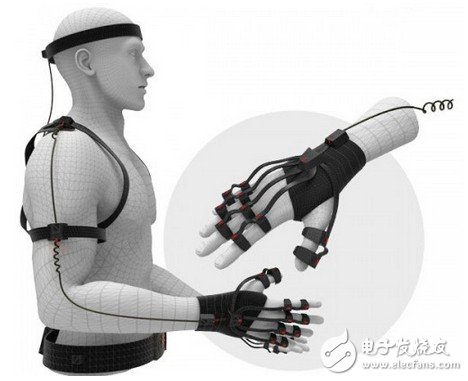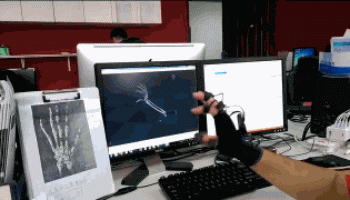In the current consumer VR devices, except for the three major (HTC vive, Oculus rift, PS VR) heads, most of the VR heads do not have a matching somatosensory interaction (requires third-party devices), but because of the lack of Somatosensory interactions make these devices fail to form a complete virtual reality experience.
VR devices that support somatosensory interaction can effectively reduce the occurrence of motion sickness and greatly improve immersion. The most important thing is to let your body interact with various scenes in the virtual world. In the somatosensory interaction technology, various categories and products can be subdivided, such as: somatosensory seats, treadmills, somatosensory clothes, spatial positioning technology, motion capture technology, and the like.
The following is mainly about the common motion capture and spatial positioning technology currently available on VR. Laser positioning technologyThe basic principle is to install several laser-emitting devices in the space. The laser beam is scanned in both directions of the horizontal and vertical directions. A plurality of laser-sensing receivers are placed on the positioned object to calculate the angle of the two beams reaching the positioning object. The difference is, so that the three-dimensional coordinates of the object are obtained, and the three-dimensional coordinates of the object change as the object moves, and the motion information is obtained, and the motion capture is completed.
Representative: HTC Vive - Lighthouse Positioning Technology
HTC Vive's Lighthouse positioning technology relies on lasers and light-sensitive sensors to determine the position of moving objects. By installing two "lighthouses" about 2 meters high on the diagonal of the space, the lighthouse can emit 6 laser beams per second. Two scanning modules respectively rotate the spatial scanning laser to scan the positioning space in the horizontal and vertical directions.

HTC Vive's head display and up to 70 photosensors are mounted on the two handles. By calculating the time of receiving the laser, the exact position of the sensor position relative to the laser emitter is obtained, using the head display and the different positions on the handle. A photosensor thus derives the position and orientation of the head/handle.

Advantages and disadvantages
The advantage of laser positioning technology is that it has lower cost than other positioning technologies, high positioning accuracy, no positioning due to occlusion, high latitude, and avoids complicated program operations, so the response speed is extremely fast and almost no delay. At the same time, it can support multiple target positioning and has a wide range of movement.
The downside is that it uses mechanical means to control laser scanning, which is poor in stability and durability. For example, when using HTC Vive, if the lighthouse is shaken seriously, it may cause unpositionability. As the use time increases, the mechanical structure wears out. It can also lead to malfunctions such as positioning failure.
2. Infrared optical positioning technologyThe basic principle of this technology is to cover the entire space by installing multiple infrared emitting cameras in the space. The surface of the object to be positioned is equipped with an infrared reflective spot, and the infrared light from the camera is reflected by the reflective point. By capturing these reflected infrared light, working with multiple cameras and calculating by subsequent programs, the spatial coordinates of the object to be positioned can be obtained.

Representative: Oculus Rift Active Infrared Optical Positioning Technology + Nine-Axis Positioning System
Unlike the infrared optical positioning technology described above, the Oculus Rift uses active infrared optical positioning technology. The head display and the handle are not placed on the infrared reflection point, but an "infrared light" that emits infrared light.
Then use two cameras to shoot. It should be noted that the two cameras are equipped with infrared light filters, so the camera can capture only the infrared light emitted by the head display/handle, and then use the program to calculate the head. The space coordinates of the display/handle.

Compared with infrared optical positioning technology, the infrared light from the camera is used to obtain infrared light through the reflection of the tracked object. The Oculus Rift's active infrared optical positioning technology directly installs the infrared emitter on the object being tracked and emits infrared light. .
In addition, the Oculus Rift also has a built-in nine-axis sensor, which can use the nine-axis sensor to calculate the spatial position information of the device when the infrared optical positioning is occluded or blurred, so as to obtain higher precision positioning.
Advantages and disadvantages
The standard infrared optical positioning technology also has very high positioning accuracy, and the delay rate is also very low. The shortage is that this complete set of equipment is very expensive to add, and it is very troublesome to use, and it is necessary to build a lot of cameras in the space, so This technology is currently generally used commercially.
The Oculus Rift's active infrared optical positioning technology + nine-axis positioning system greatly reduces the complexity of infrared optical positioning technology, which does not require the installation of infrared emitters on the camera, nor the deployment of too many cameras (only two). It is very convenient to use and has a long service life compared to the HTC Vive lighthouse.
The downside is that due to the limited viewing angle of the camera, the Oculus Rift can't be used in too large a range of activities, the area that can be interacted is about 1.5 meters * 1.5 meters, and does not support the positioning of too many objects.
3. Visible light location technologyThe principle of visible light localization technology is similar to that of infrared optical positioning technology. The camera also captures the position information of the object being tracked, but it does not use infrared light, but directly uses visible light to install different colors on different objects being tracked. The illuminating lights capture the color spots of the camera to distinguish between different objects being tracked and position information.
Representative: PS VR
Sony's PS VR uses the above technology. Many people think that the blue light emitted by the PS VR head is only used for decoration. It is actually used by the camera to calculate the position information, and the two somatosensory handles are respectively provided. A light that emits sky blue and pink light, and then uses the binocular camera to obtain the light information, then the space coordinates of the light ball can be calculated.

Advantages and disadvantages
Compared with the previous two technologies, visible light positioning technology has the lowest cost, and does not require subsequent complicated algorithms. The technical implementation is not difficult, which is one of the reasons why PS VR can buy such a cheap, and the sensitivity is high and stable. And durable, it is the most popular solution.
The shortcoming is that the positioning accuracy of this technology is relatively poor, and the anti-blocking property is poor. If the light is blocked, the position information cannot be confirmed; and there are certain restrictions on the use of the environment. If the ambient light is too strong, the light is weakened and may not be located. Using the same color of light in the air may result in misalignment; at the same time, due to the camera's viewing angle, the movable range is small, the number of lights is limited, and the number of targets that can be tracked is small.
4. Computer vision motion capture technologyThis technology is based on the principle of computer vision. It uses multiple high-speed cameras to shoot moving targets from different angles. When the target's motion track is acquired by multiple cameras, the target track can be obtained in the computer through subsequent program operations. The information also completes the capture of the action.

Representative: Leap MoTIon gesture recognition technology
Leap MoTIon's gesture recognition technology in VR applications facilitates the above-mentioned technical principle. It has two cameras installed in front of the VR head display. Using the binocular stereo vision imaging principle, two cameras are used to extract the three-dimensional position. The information is used for gesture capture and recognition, and the hand stereo model and motion trajectory are established to realize the somatosensory interaction of the hand.

Advantages and disadvantages
The advantage of adopting this technology is that a small number of cameras can be used for motion capture of multiple targets in the monitoring area, and large objects have high positioning accuracy, and the monitored object does not need to be worn and take any positioning equipment, and the constraint is small and closer to the real one. Somatosensory interactive experience.
The shortcoming is that this technology requires a large amount of program calculation, has certain configuration requirements for hardware devices, and is greatly affected by the external environment, such as dimly lit ambient light, cluttered background, and obstructions, etc. In addition, if the captured motion is not a reasonable camera angle and program processing influence, it may not be accurately captured for a relatively fine motion.
5. Motion capture technology based on inertial sensorWith this technology, the tracked target needs to wear integrated accelerometers such as accelerometers, gyroscopes and magnetometers on important nodes. This is a complete motion capture system that requires multiple components to work together, which consists of inertial components and The data processing unit is composed of the data processing unit, and the data processing unit uses the kinematic information collected by the inertial device. When the target is in motion, the position information of the components is changed, thereby obtaining the trajectory of the target motion, and then the motion can be completed by the inertial navigation principle. The motion capture of the target.

Representative: Novo Teng - PercepTIon Neuron
PercepTIon Neuron is a flexible motion capture system that users need to wear on their body-related parts. For example, if you have a hand, you need to wear a “gloveâ€. Its sub-node module is smaller than a coin, but integrates an accelerometer, a gyroscope, and an inertial measurement sensor of a magnetometer. Then it can complete the motion capture of one-arm, whole body, fingers and other sophisticated movements and large dynamic running jumps. It can be said that the above motion capture technology has the largest amount of information that can be captured, and can transmit data wirelessly.

Advantages and disadvantages
Compared with the above motion capture technology, the motion capture technology based on the inertial sensor is less affected by the outside world, and it is not necessary to install a messy component such as a "lighthouse" or a camera in the use space, and the amount of motion information that can be acquired is large, the sensitivity is high, and the dynamic performance is obtained. Good, wide range of movement, somatosensory interaction is also completely close to the real interactive experience.
What is lacking is that the device needs to be worn on the body, which may cause some cumbersomeness and at the same time due to the work of the sensor.
Summary: In the future, computer vision motion capture technology is kingEach of these motion capture technologies has its own advantages and disadvantages. For example, HTC Vive's laser positioning technology has high precision and wide range of motion, but its stability and durability are poor, although Oculus Rift's active infrared optics. Positioning technology solves this problem, but the movable range has become a short board.
On the whole, personally feel that the most practical application of VR is the HTC Vive laser positioning technology. After all, it can achieve the largest range of spatial positioning and interaction in the consumption level, and the positioning accuracy is very high.
However, in the ideal case, it is still a good motion-based capture technology based on inertial sensors, which can achieve more precise motion capture and more space to travel, but this system is still mainly used in business. Not found in civil use.
However, in the future, personally think that computer vision motion capture technology is the king. When the camera, computing program and computing hardware keep up, its advantages will be stronger than the inertial sensor-based motion capture technology. After all, there is no need to wear the sensor on the body. The following can also meet the fine capture of the action, such as the remote 3D holographic image previously released by Hololens, this similar technology is used, but at present the technology is not mature, and the future can be expected.
Headset Battery,BT Headset Battery,Bluetooth Headset Battery,Headset Bluetooth Battery
Shenzhen Sunwind Energy Tech Co.,Ltd , https://www.sunwindbatterylm.com